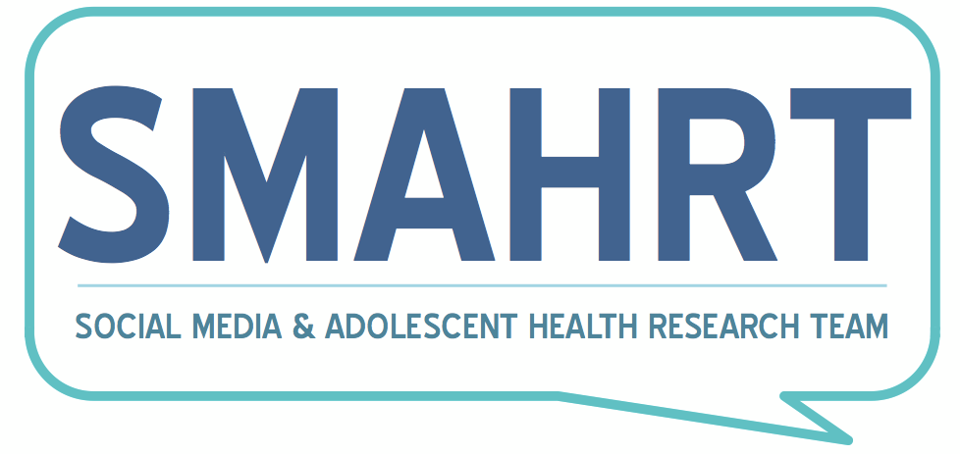
To modern adolescents, texting and tweeting seem as natural as eating and breathing. Social media is embedded in all aspects of their lives — but how does it impact their development? Are there ways to maximize the benefits of social while minimizing its risks?
Last week, Seattle Children’s Research Institute held its first SMAHRT (Social Media and Adolescent Health Research Team) Conference in downtown Seattle to present the latest research and encourage public dialogue. SMAHRT studies the relationship between young people and social media. Its three-day event attracted a capacity crowd of educators, experts and parents.
“What we study is understandable, accessible and important to a lot of people,” says Megan Moreno, MD, SMAHRT’s conference director and principal investigator. “We’ve made it a priority to translate and share what we’re learning with the wider community.”
 SMAHRT’s mission focuses on three general areas: technology use and misuse, Internet safety and using social media to research and address health issues from cyberbullying to substance abuse. All were reflected in the event’s 20-plus panels, seminars and group discussions.
SMAHRT’s mission focuses on three general areas: technology use and misuse, Internet safety and using social media to research and address health issues from cyberbullying to substance abuse. All were reflected in the event’s 20-plus panels, seminars and group discussions.
“Part of the emphasis of the conference is to empower people,” Moreno says. “While there are issues and risks surrounding social media, it can also have huge benefits.”
Where tech and health meet
An apple a day might keep the doctor away, but does an Apple product offer the same benefits?
The SMAHRT Conference examined from a number of angles how social media positively and negatively affects adolescent health. Panelist Don Shifrin, MD, of Bellevue Pediatric Associates, summarized the current pediatric standpoint: Most pediatric visits are too brief to fully address social media. If there’s time for only one topic, Shifrin recommended tackling the connection between tech and sleep issues.
“I plead with every teenager and tweenager that the bed should be a sacred spot. The biggest stealer of sleep for kids from 12 and 13 on up is having digital devices in bed,” he said.
Sleep deprivation causes a host of problems: obesity, emotional difficulties and impaired cognitive function, among others. Shifrin advised that parents become “electronic sheriffs” and impose digital curfews.
In addition to her role at SMAHRT, Moreno serves as a member of the American Academy of Pediatrics (AAP) Committee on Communications and Media. The AAP recommends establishing a family media plan that addresses screen time, types of devices allowed, approved sites and more.
Perhaps most important, adults need to model positive behavior themselves. “Kids may initially push back about not wanting to turn their phones off in the evening, but [when] they do, they say it’s a actually a relief,” Moreno says. “It’s the parents who are the ones breaking the rules the most. They hear the phone buzz and sneak off to check it. A family media plan holds adults responsible, too.”
The upside of social media is that valuable information is now available through all kinds of digital channels. Shifrin recommends KidsHealth; Seattle Mama Doc is a nationally recognized health and parenting blog by Seattle Children’s pediatrician Wendy Sue Swanson, MD.

SMAHRT Conference “Mental Health and Social Media” panelists, from left: moderator Laura Richardson, MD, physician of adolescent medicine at Seattle Children’s Hospital; Megan Pumper, assistant at Seattle Children’s Research; Erin Kelleher, undergraduate student from Wisconsin; Scottye Cash, PhD, social worker and researcher from Ohio State University.
Next-gen bullying
Given the growing presence of online bullying in contemporary kids’ lives — and in the headlines — SMAHRT’s panel discussion “Cyberbullying: Perspectives from Clinical, Legal and Policy” was particularly talked-about.
“In the United States, it’s estimated that between 20 and 40 percent of middle- and high-school students experience cyberbullying,” said presenter Ellen Selkie, MD, of Seattle Children’s Division of Adolescent Medicine. “It also continues into young adulthood, with studies showing a prevalence of around 10 to 15 percent with college students.”
Even so, the Centers for Disease Control and Prevention (CDC) only recently created a general definition for bullying, as part of its 2014 report “Bullying Surveillance Among Youths.”
“The speed and distance at which cyberbullying spreads is different than face-to-face playground bullying. Kids can’t go just go home and find a place to feel safe and comfortable,” said SMAHRT panelist Mike Donlin, program supervisor for the School Safety Center, a division of the State of Washington’s Office of the Superintendent of Public Instruction. “They carry it — the bullying — in their backpacks and pockets, thanks to these media devices.”
In many respects, technology outpaces educators, parents and even the legal system’s ability to address the problem. According to attorney Peter Moreno (Megan Moreno's husband), a conference panelist and lecturer at the University of Washington School of Law, “In the cyberbullying context, the law is unsettled.”
He noted that 49 states — Montana being the exception — have some kind of law prohibiting cyberbullying or electronic harassment and also require schools to adopt anti-bullying policies. Most of those laws were created within the last 10 years.
“The lower courts don’t have a whole lot of guidance as yet from supreme courts as to when a punishment is permissible for cyberbullying,” Peter Moreno explained.
The landscape of cyberbullying is disturbing, but SMAHRT’s panelists provided valuable guidance. Peter Moreno advised anyone who encounters cyberbullying to document everything: Save texts, chats, screen shots and all other available records as evidence.
Donlin stressed the importance of parents’ simply staying connected and knowledgeable. Keep the lines of conversation open with your kids, and inform yourself about new technologies.
The more you know
SMAHRT recommends these resources for more information on cyberbullying and online safety.
Common Sense Media: A nonprofit dedicated to disseminating information related to media and technology.
Parents Against Bullying: Advice on how to prevent bullying, with videos for and by teens.
Pew Research Internet Project: A nonprofit conducting research on how the Internet affects families and communities
StopBullying.gov: This informative site defines cyberbullying, notes risk factors and advises parents on how to help prevent and address the issue.
Wired Safety: A resource for learning about general online safety.











